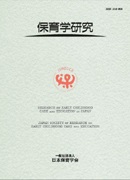Volume 52, Issue 1
Displaying 1-17 of 17 articles from this issue
- |<
- <
- 1
- >
- >|
Foreword
-
2014Volume 52Issue 1 Pages 3-4
Published: August 31, 2014
Released on J-STAGE: August 04, 2017
Download PDF (180K)
Part I Free Topic Articles
Articles
-
2014Volume 52Issue 1 Pages 6-18
Published: August 31, 2014
Released on J-STAGE: August 04, 2017
Download PDF (1611K) -
2014Volume 52Issue 1 Pages 19-30
Published: August 31, 2014
Released on J-STAGE: August 04, 2017
Download PDF (1234K) -
2014Volume 52Issue 1 Pages 31-42
Published: August 31, 2014
Released on J-STAGE: August 04, 2017
Download PDF (1371K) -
2014Volume 52Issue 1 Pages 43-55
Published: August 31, 2014
Released on J-STAGE: August 04, 2017
Download PDF (1365K) -
2014Volume 52Issue 1 Pages 56-67
Published: August 31, 2014
Released on J-STAGE: August 04, 2017
Download PDF (1247K) -
2014Volume 52Issue 1 Pages 68-79
Published: August 31, 2014
Released on J-STAGE: August 04, 2017
Download PDF (1275K) -
2014Volume 52Issue 1 Pages 80-89
Published: August 31, 2014
Released on J-STAGE: August 04, 2017
Download PDF (1030K) -
2014Volume 52Issue 1 Pages 90-104
Published: August 31, 2014
Released on J-STAGE: August 04, 2017
Download PDF (1590K) -
2014Volume 52Issue 1 Pages 105-115
Published: August 31, 2014
Released on J-STAGE: August 04, 2017
Download PDF (1242K) -
2014Volume 52Issue 1 Pages 116-128
Published: August 31, 2014
Released on J-STAGE: August 04, 2017
Download PDF (1443K)
How to apply to featured articles and free topic articles for the Journal
-
2014Volume 52Issue 1 Pages 129-130
Published: August 31, 2014
Released on J-STAGE: August 04, 2017
Download PDF (110K)
Part II Steps in Early Childhood Care and Education (No.1)
-
2014Volume 52Issue 1 Pages 132-139
Published: August 31, 2014
Released on J-STAGE: August 04, 2017
Download PDF (957K) -
2014Volume 52Issue 1 Pages 140-
Published: August 31, 2014
Released on J-STAGE: August 04, 2017
Download PDF (71K)
Contents
-
2014Volume 52Issue 1 Pages 141-142
Published: August 31, 2014
Released on J-STAGE: August 04, 2017
Download PDF (67K)
Afterword
-
2014Volume 52Issue 1 Pages 143-
Published: August 31, 2014
Released on J-STAGE: August 04, 2017
Download PDF (65K)
publication data
-
2014Volume 52Issue 1 Pages App5-
Published: August 31, 2014
Released on J-STAGE: August 04, 2017
Download PDF (29K)
- |<
- <
- 1
- >
- >|
